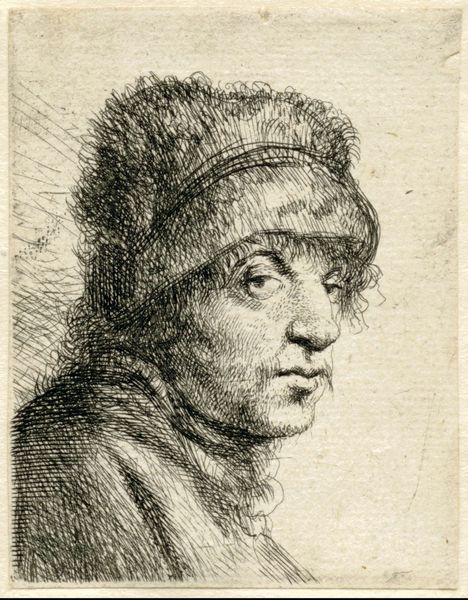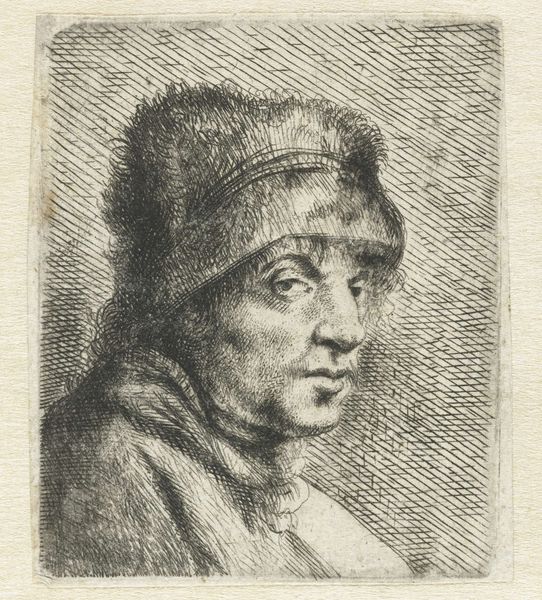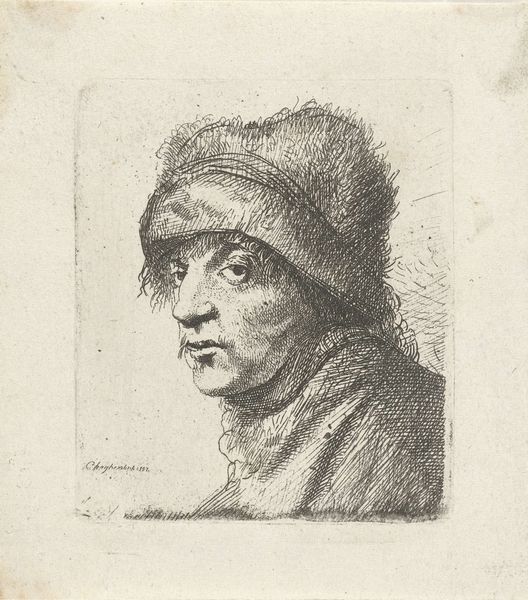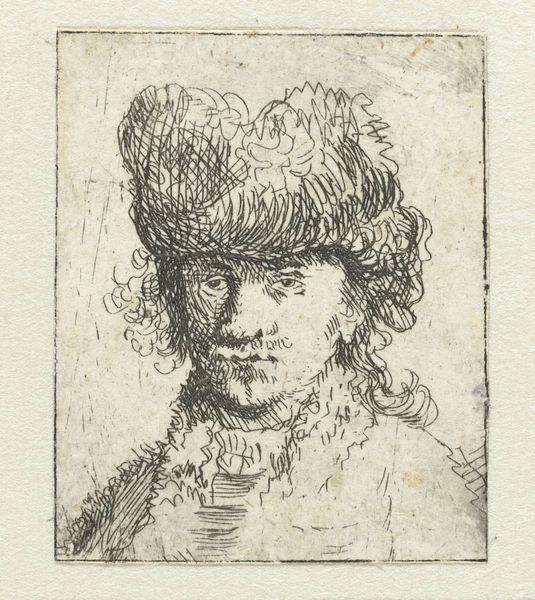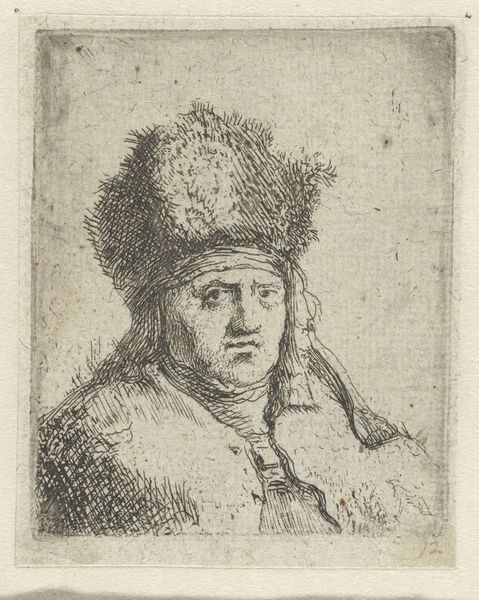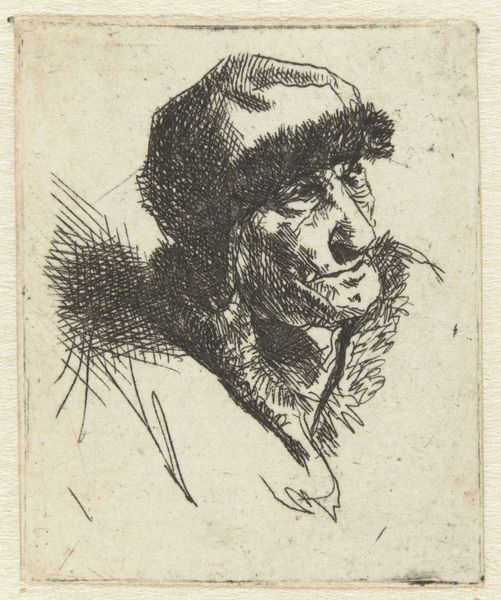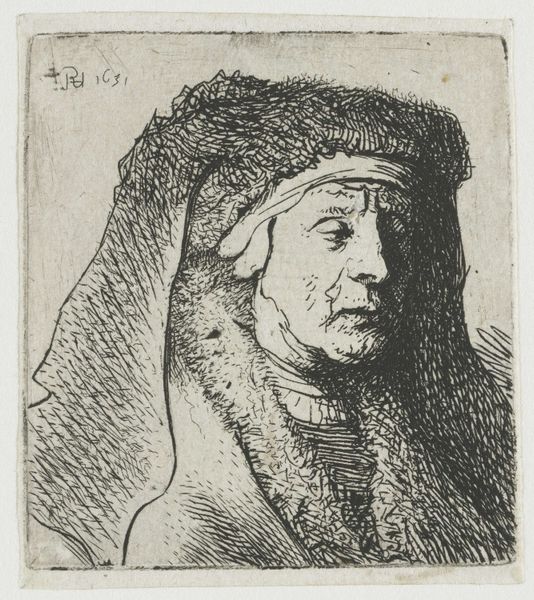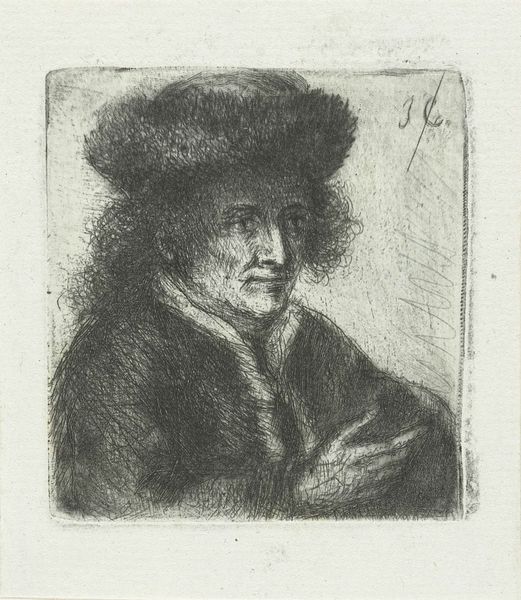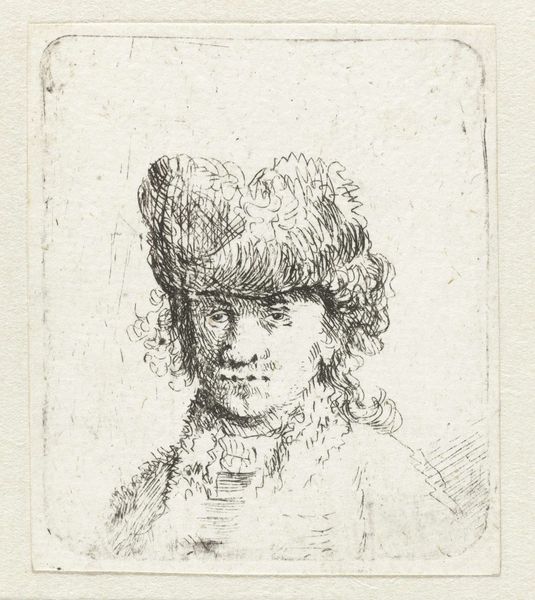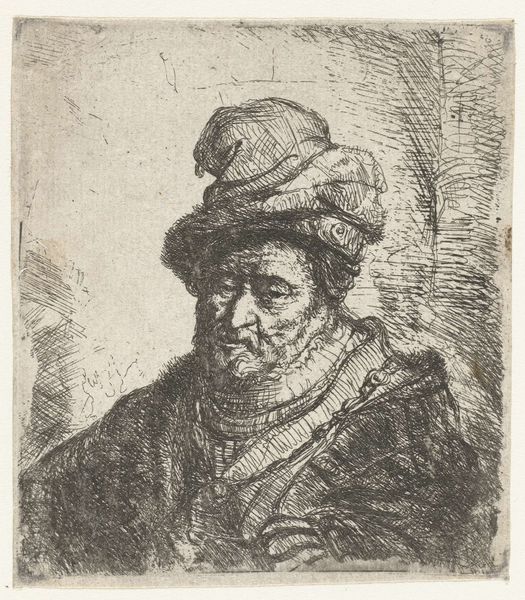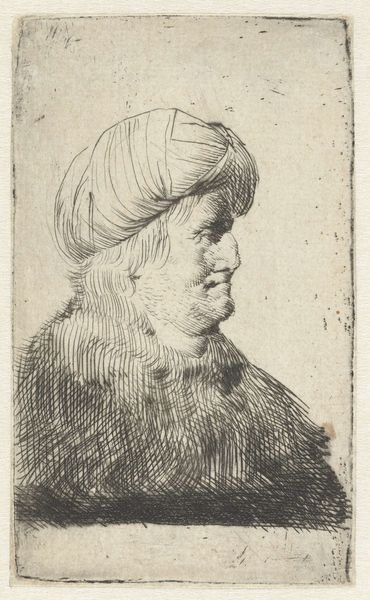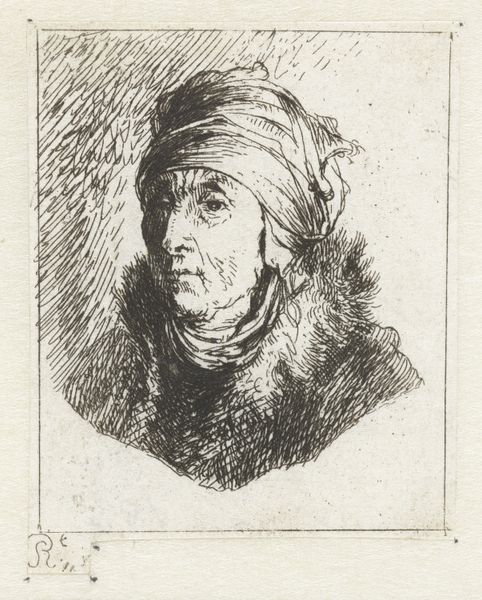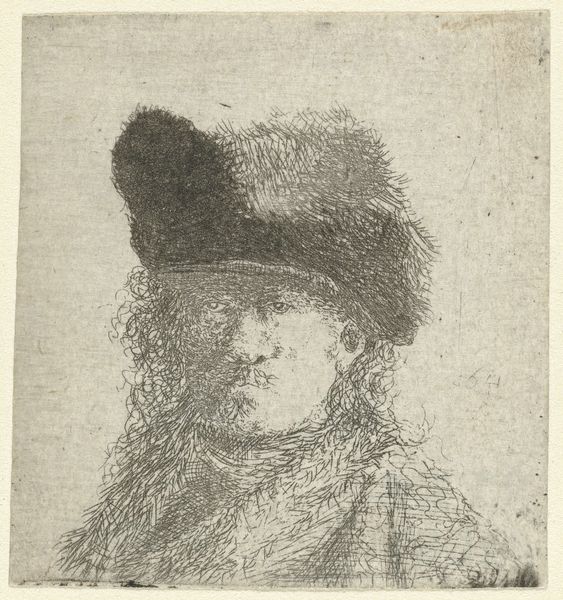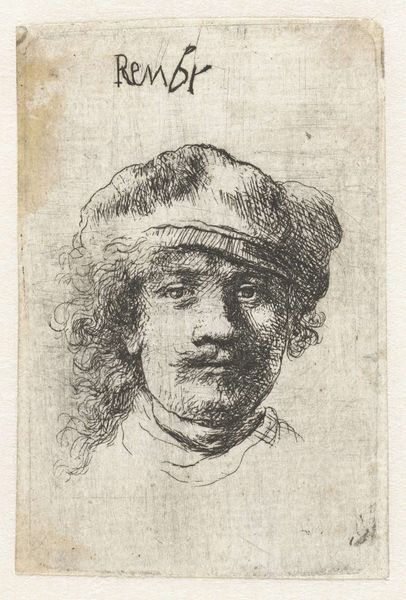
print, etching
#
portrait
#
baroque
#
dutch-golden-age
# print
#
etching
#
realism
Dimensions: height 75 mm, width 59 mm
Copyright: Rijks Museum: Open Domain
Editor: Here we have Jan Lievens’ "Head of a Man with a Cap," an etching, likely from the mid-17th century, on display at the Rijksmuseum. There's something incredibly intimate about this small print. It almost feels like a candid snapshot. What's your take? Curator: It’s an intriguing work. What strikes me is how Lievens uses the etching technique, with all those seemingly chaotic lines, to portray a very specific individual. We might consider how representations of the "everyman" were being constructed during the Dutch Golden Age. To me, it speaks to the rising prominence of the bourgeoisie and the democratisation of art. Who do you think this man is, and what does the portrait, created through the detailed lines, suggest about his place in society? Editor: I'm not sure... maybe just an ordinary person? But it's interesting you mention democratization, since earlier portraiture was really only for the elite. How do you see the choice of medium – the etching itself – factoring into that? Curator: Exactly! Etchings, and prints more generally, are much more accessible. They allow for wider circulation and therefore, wider access to images and ideas. This portrait becomes less about celebrating a specific powerful figure, and more about observing and appreciating a type of person, almost like a study. Could we then consider, for example, how representations of marginalized people became increasingly visible, sometimes reinforcing stereotypes but also occasionally challenging them? Editor: So it's about questioning who gets represented, and how? It definitely makes you wonder about the power dynamics between the artist and the subject. Curator: Precisely. Thinking critically about whose stories are told, and how they're told, remains a crucial task when engaging with art from any period. Editor: I see this print in a whole new light now. Thanks for sharing those insightful perspectives! Curator: My pleasure. It’s these types of conversations that truly enrich our understanding of art history.
Comments
No comments
Be the first to comment and join the conversation on the ultimate creative platform.
